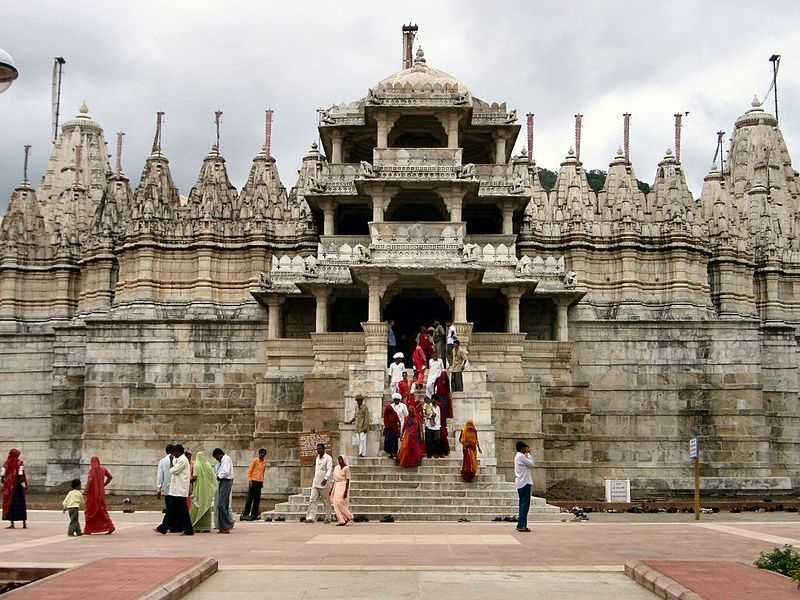Settled in the picturesque hills of Mount Abu, the Dilwara Temple stands as a testament to the exquisite artistry and profound spirituality of Jain architecture. These temples, revered by millions, are not just places of worship but also marvels of intricate craftsmanship, showcasing the brilliance of ancient artisans. In this article, we will explore the history, architectural significance, and serene beauty of the Dilwara Jain Temples.
Historical Background
The Dilwara Temple was built between the 11th and 13th centuries and is dedicated to various Tirthankaras, the spiritual teachers of Jainism. They were commissioned by wealthy Jain merchants and patrons, reflecting their devotion and the flourishing Jain community in the region. The temples are named after the nearby village of Dilwara, and they are considered one of the most important pilgrimage sites for Jains.
The primary temples in the complex are the Vimal Vasahi Temple, dedicated to Adinatha (the first Tirthankara), and the Luna Vasahi Temple, dedicated to Neminatha (the 22nd Tirthankara). Both temples display extraordinary craftsmanship that leaves visitors in awe.
Architectural Marvels
The Dilwara Temples are renowned for their stunning marble architecture. The intricate carvings on the walls, pillars, and ceilings depict various motifs, including floral designs, animal figures, and divine beings. The use of white marble adds to the ethereal beauty of the temples, creating an atmosphere of serenity and tranquility.
Vimal Vasahi Temple: This temple is the older of the two and features a stunning entrance adorned with beautifully carved pillars. Inside, visitors are greeted by a magnificent idol of Adinatha, surrounded by exquisite carvings that narrate tales from Jain mythology. The temple's ceiling showcases intricate patterns that resemble a beautiful lacework design, making it a must-see for art enthusiasts.
Luna Vasahi Temple: Slightly younger than the Vimal Vasahi Temple, the Luna Vasahi Temple is equally impressive. It boasts a magnificent hall supported by intricately carved pillars. The ceiling features an elaborate design with medallions that catch the light in a mesmerizing way. The idol of Neminatha here is adorned with beautiful jewels and is a focal point for pilgrims.
Spiritual Significance
The Dilwara Jain Temples hold immense spiritual significance for Jains around the world. They are a symbol of the principles of Jainism, which emphasize non-violence, truth, and asceticism. The serene environment of Mount Abu complements the temples, providing a peaceful backdrop for meditation and reflection.
Pilgrims flock to the Dilwara Temples during festivals and special occasions, where rituals and prayers are performed in devotion to the Tirthankaras. The temples serve as a gathering place for the Jain community, fostering a sense of unity and spirituality.
Visiting the Dilwara Temples
When planning a visit to the Dilwara Jain Temples, it’s essential to consider the best times to go. The ideal months are from October to March when the weather is pleasant and conducive for exploration. Visitors can access the temples via a short drive from Mount Abu, followed by a gentle uphill walk. The approach to the temples is adorned with lush greenery, making the journey itself a delightful experience.
Visitors are often captivated by the temples’ architecture and the tranquility of the surroundings. Photography is allowed, and capturing the intricate details of the temple’s carvings is a popular activity. However, it’s important to respect the sanctity of the site by maintaining a serene demeanor and dressing modestly.
Dilwara Temples Photos: Capturing the Essence
The visual beauty of the Dilwara Temples is truly remarkable, and photographs taken here often capture the intricate details and grandeur of the architecture. From the detailed carvings on the pillars to the serene idols of the Tirthankaras, each photograph tells a story of devotion and artistry.
Visitors often share their Dilwara Temples photos on social media, showcasing the stunning white marble and the peaceful ambiance that envelops the area. The interplay of light and shadow on the carvings can create breathtaking images, making the Dilwara Temples a favorite spot for photographers.
Conclusion
The Dilwara Jain Temples are more than just architectural wonders; they are a sacred space that embodies the essence of Jain philosophy and art. With their intricate carvings, serene environment, and rich history, these temples continue to attract pilgrims and tourists alike. A visit to Mount Abu would be incomplete without exploring the magnificent Dilwara Temples, where one can immerse in the spiritual heritage of Jainism and witness the brilliance of ancient craftsmanship. Whether you are a devotee, a history enthusiast, or an art lover, the Dilwara Temples offer an unforgettable experience that resonates with peace and beauty.






Comments